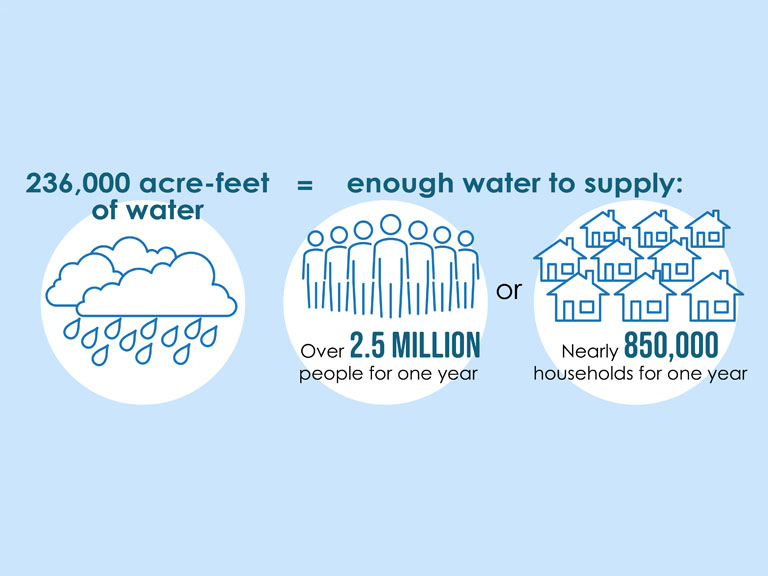Big Storms, Dry Spells, Demonstrate the Need for Improved Infrastructure and the Delta Conveyance Project
236,000 acre-feet of water equals enough water to supply over 2.5 million people for one year or nearly 850,000 households for one year.
*This article was updated August, 24, 2022 with new information made available with the publication of the Delta Conveyance Draft EIR on July 27, 2022. See updated information at the end of this blog."
California is immersed in a third year of drought, with January, February and March of 2022 experiencing the lowest precipitation on record.
Weather whiplash of big storms followed by dry spells makes every drop of rain, every flake of snow, and every water molecule vital this year for families, farms, the environment and the economy.
But outdated infrastructure and the orientation of the pumping facilities in the south Delta limits our ability to capture available water from storm events. The Delta Conveyance Project would help resolve this limitation.
In fact, if the Delta Conveyance Project was operational at the end of 2021, the State Water Project would have captured about 236,000 acre-feet of additional water - enough water for over 2.5 million people, or nearly 850,000 households, for a full year.
California experienced near record-breaking amounts of precipitation at the end of 2021. Some of the water from those storms was captured and stored, but the available flows were more than what could be captured with the current system. So why couldn’t the current water system in the Delta take advantage of all this water?
In October, when high storm flows came and went quickly, the existing infrastructure and requirements for State Water Project operations limited our ability to capture these flows. In other words, the current configuration of the SWP is not sufficient to capture high and flashy flows, like those from the October storm. Additionally, in December and January, to protect sensitive fish from getting pulled into less habitable parts of the Delta, pumping of water from the south Delta was limited, even when there was an abundant amount of water in the north Delta from storm events.
If the Delta Conveyance Project had been operational during those storms, the State Water Project would have been able to capture more water, while still protecting sensitive fish, and move and store this much-needed water for use later in the year during this severe drought.
Weather extremes are the new climate reality and the intensity and frequency of extreme events is increasing. Conditions can whip between heavy precipitation events to extreme heat and drought conditions all within the same year. This water year is an excellent example of “climate whiplash” and presents a clear illustration of how our water delivery system and old infrastructure needs to adapt to the extremes of climate change.
The repercussions are clear: water managers must be able to capture, move and store more water when presented with the opportunity. The Delta Conveyance Project, by modernizing the infrastructure of the State Water Project, would go a long way toward adapting to our new climate reality.
Updated Information:
*The storm events in October and December of 2021 produced Delta outflows that, based on preliminary proposed operations criteria, would have provided conditions such that diversions at the proposed new North Delta Diversion (NDD) facility could have operated about nine days utilizing the full 6,000 cubic feet per second (cfs) capacity, 13 days of diversions between 900 cfs and 6,000 cfs, and 28 days at or below 900 cfs. The NDD would include a pulse protection that is based on flows at Wilkins Slough. Calculations estimated that there were two periods of pulse protection (10/26/2021 and 12/15/2021) that would have limited the NDD to 900 cfs as a result.
The basis for these assumptions and calculations may be found in the Draft Environmental Impact Report for the Proposed Delta Conveyance Project, published on July 27, 2022. Specifically, section 3.16.7 on page 3-149 covers “Preliminary Proposed Operations Criteria” and Table 3.15 describes “Proposed North Delta Diversion Bypass Flow and Pulse Protection Requirements.” Figure 3.37 is generalized to help describe the broad concept of operational rules.
